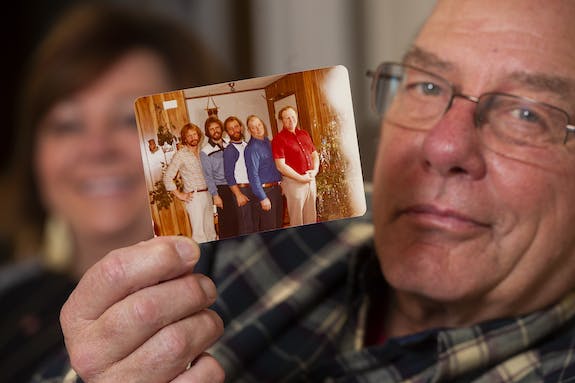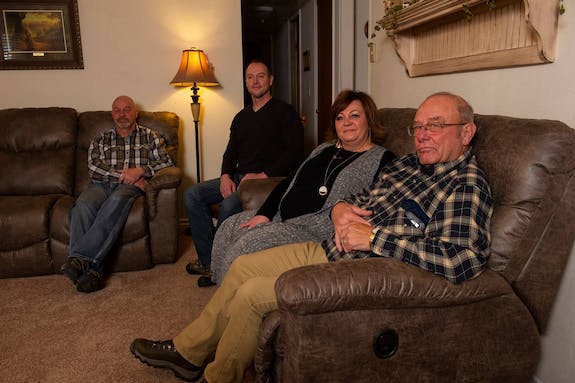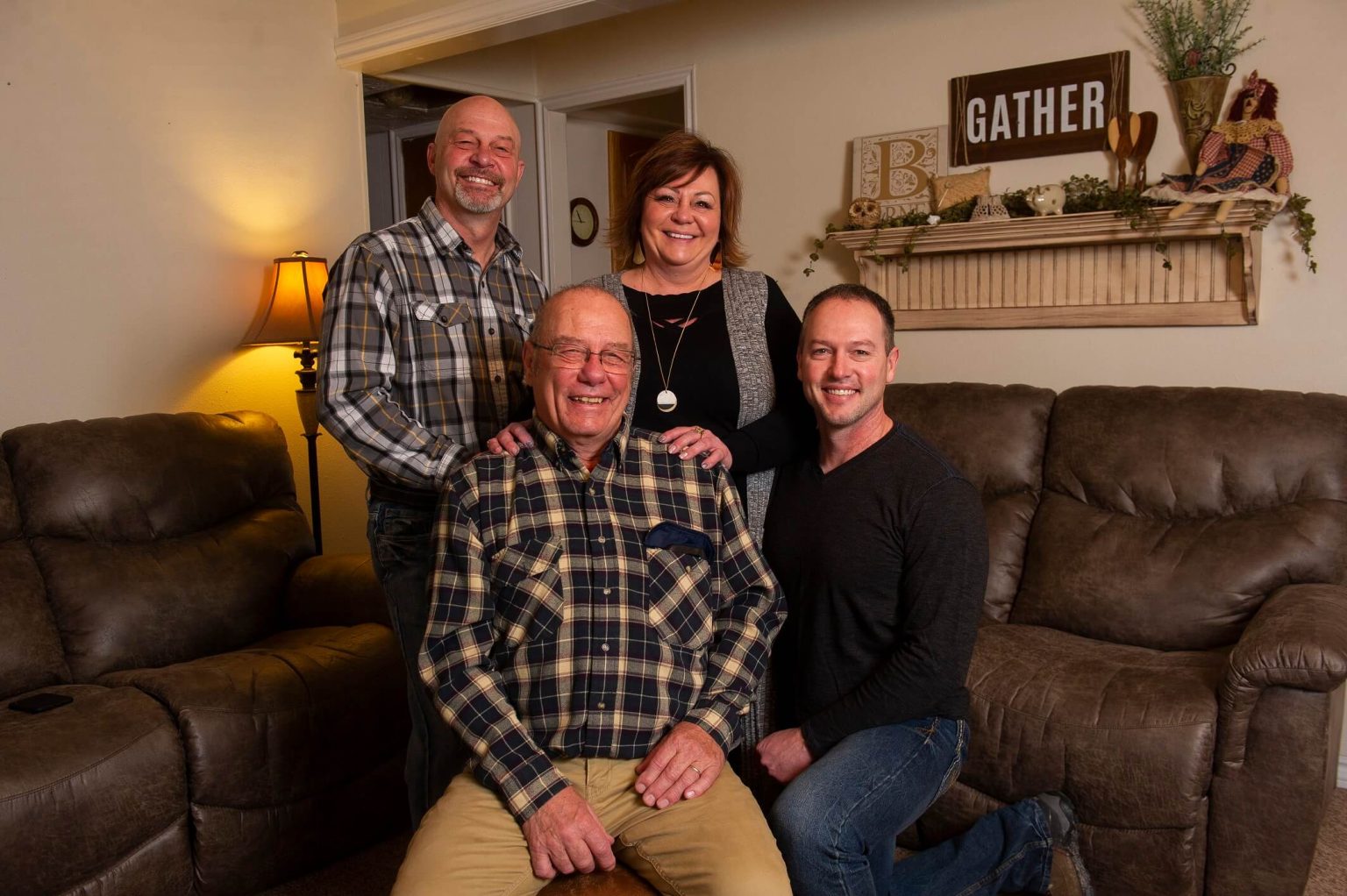They’ve never thought of themselves as an “INL family,” but members of the Barney family of Rexburg have experience with the lab that dates back to the Atomic Energy Commission days. One by one, members of this family found themselves working at the Idaho Site in jobs fundamental to its mission: radiation safety and health, security, cleanup, construction.
All in all, over three generations the family has a combined work history of 85 years. In the beginning, Blain C. Barney followed a familiar path. After serving in the U.S. Navy in World War II, on a minesweeper in the South Pacific, he returned to Madison County to farm. Construction work offered better security for himself and his family, however, especially as a member of the Laborers’ union.
As a union member, he participated in building the Palisades, Ririe and Teton dams. In April 1953, he went to work at the National Reactor Testing Station, now Idaho National Laboratory, where he was employed until 1982. His first project was building the hangar for the Aircraft Nuclear Propulsion Program, the Cold War-era project to explore the possibilities for an atomic airplane.
To a certain extent, work was work to the elder Barney, said his son, Blain K. Barney. But because of his service during World War II, there was also an element of patriotic pride involved. The AEC work offered a clearer shot at the American dream. “He was definitely grateful for the opportunity it offered,” his son said.

Blain C. Barney, who passed away in 2002 at age 77, stayed on the job long enough to see his namesake follow in his footsteps, joining the Laborers’ union in 1978. And today, three of Blain K. Barney’s children, Travis, Jarod and Tammy, work for INL or the Idaho Cleanup Project.
Blain K. Barney put in hours at the New Waste Calcining Facility, as well as jobs at Test Area North, Naval Reactors Facility and Argonne National Laboratory-West. “I got to see the big picture,” he said. Compared to construction work in other parts of eastern Idaho, working at the Site was different. “The pace was not as fast,” he said. “It needed to be more precise.” The pressure was not just to get it done, but to get it done right.
Blain Barney left construction in 1984 when he joined American Protective Services, the lab’s security contractor, which was rapidly expanding. He stayed on the security force until 1990, but found himself missing construction work, especially the variety. He returned to construction, where he remained until retiring in 2011.
Travis Barney, the first of the third generation, went to work at the Idaho Chemical Processing Plant in 1990. “In high school, I wanted to go into drafting, but I had friends who went through the (radiation) protection program at EITC (Eastern Idaho Technical College, now College of Eastern Idaho), and they told me the placement was fantastic,” he said. So he signed up, got his certification, and became a radiological control technician (“RadCon tech” in site-speak).
Then, the Chem Plant was still being run by Westinghouse Idaho Nuclear Company. “I’ve worked for five different companies,” he said. He’s gotten to see many changes. The name changed to Idaho Nuclear Technology and Engineering Center (INTEC), and the focus shifted to cleanup and waste processing.
After 15 years as a RadCon tech, Travis got involved with waste repackaging at INTEC, and now is nuclear facility manager for the Remote-Handled Transuranic Waste Project. “The work is exciting,” he said. They have repurposed hot cells in the New Waste Calcining Facility (which was shut down in 1999) to handle waste from the Materials & Fuels Complex and the Radioactive Waste Management Complex, for characterization and shipment to the Waste Isolation Pilot Plant near Carlsbad, New Mexico.
Jarod Barney’s entrance into the INL Site workforce came in 2018, when he was hired by the Idaho Cleanup Project, run by Fluor Idaho, as a decontamination and decommissioning skilled mechanic at INTEC. He had spent 19 years with a drilling and blasting company in Idaho Falls, in the shipping, handling and receiving department. When the job began to involve more travel than he liked, however, he began looking around, and when he learned of the opportunity with Fluor, he took it.
“I feel like I work with a really good team,” he said. “If something breaks down, we go and fix it. Or else we’re trying to prevent things from breaking.”

The latest family member to join the INL ranks is Tammy Barney-Nicholas, who hired on in September 2018 as an administrative assistant in the Health Physics Instrumentation Lab at the Site’s Central Facilities Area. Since coming on board, she has become co-chair of CFA’s Environmental Safety & Training committee. She has learned a lot about the lab’s safety culture. “Coming from the outside, you’re not that aware of it,” she said.
Tammy admits to being an enthusiastic participant, eager to learn about the place that has done so much for her family. Not that she heard much about it growing up. “Dad worked out there, but he didn’t really talk that much about it,” she said.
When she joined the Instrumentation and Dosimetry team at CFA, she was surprised by how open and friendly the people were. “I love the facility and my co-workers,” she said. “We’re really busy where we are. To be out there and involved, it’s definitely a whole new world.”







